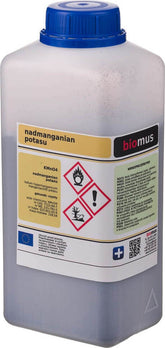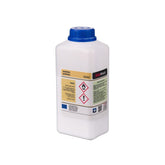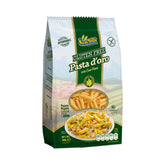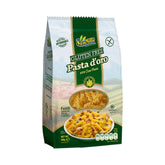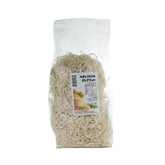Filter
152 Ergebnisse
20
- 10
- 15
- 20
- 25
- 30
- 50
Najviac predávané
- Vybraný
- Najviac predávané
- Abecedne, A-Z
- Abecedne Z-A
- cena, nízka až vysoká
- cena, od najvyššej po najnižšiu
- Dátum, od starého k novému
- dátum, nový po starý
Sortieren
Sortieren nach:
- Vybraný
- Najviac predávané
- Abecedne, A-Z
- Abecedne Z-A
- cena, nízka až vysoká
- cena, od najvyššej po najnižšiu
- Dátum, od starého k novému
- dátum, nový po starý
-
Proso cestoviny Gimlet 400 g PRO NATURAB vitamins - proper development of the nervous system Iron - supports the proper development of the brain Tryptophan - improves mood Silicon - favorable appearance of skin, hair and nails Millet noodles made from millet flour with the addition of water. Recommended for...
- Normálna cena
- €2,69
- Normálna cena
-
- predajná cena
- €2,69
- jednotková cena
- / pro
-
Rezance (celé špaldové) Gimlets BIO 400 g - BABALSCYZLOŽENIE Špaldová múka * mletá na kamenných mlynoch, voda (* prísada z kontrolovaného ekologického pestovania). VÝŽIVOVÁ HODNOTA VÝROBKU NA 100 g Výhrevnosť - 1305 kJ / 311 kcal Tuky - 2,1 g - z toho nasýtené tuky - 0,5 g sacharidy - 71,2 g...
- Normálna cena
- €3,39
- Normálna cena
-
- predajná cena
- €3,39
- jednotková cena
- / pro
-
Konjac Tagliatelle Bezlepkové BIO 385 g - LEPŠIE AKO JEDLOBESCHREIBUNG Konjak-Tagliatelle ist frei von Fett, Zucker und Salz. Es wird aus der Wurzel einer Pflanze namens Konjac (in China und Japan angebaut) hergestellt. Es ist ein traditionelles asiatisches Produkt, das seit Jahrhunderten in der lokalen Küche bekannt ist. Die Nudeln haben keine besonderen...
- Normálna cena
- €3,17
- Normálna cena
-
- predajná cena
- €3,17
- jednotková cena
- / pro
-
Cestoviny (semolina tricolor) disney cars BIO 300 g - DALLA COSTADESCRIPTION Ökologische Nudeln, die hauptsächlich für die jüngsten Verbraucher bestimmt sind (ab 3 Jahren). Dank der Magie von Disney können Familien einzigartige Formen und einzigartige Geschmacksrichtungen entdecken, die sowohl Kinder als auch Eltern zu schätzen wissen werden. Dieses italienische Produkt wird nach traditioneller Tradition...
- Normálna cena
- €2,85
- Normálna cena
-
- predajná cena
- €2,85
- jednotková cena
- / pro
-
Cestoviny (celozrnné ražné) Gimlets BIO 400 g - BIO EURÓPAZLOŽENIE Múka Ražná Celozrnný typ 1850 * (* z certifikovaného ekologického poľnohospodárstva) PRÍPRAVA Cestoviny varíme v osolenej vode 5 - 8 minút v pomere 100 g cestovín na 1 liter voda. NUTRIČNÁ HODNOTA na 100 g Výhrevná hodnota: 1430 kJ / 340 kcal Tuk:...
- Normálna cena
- €1,98
- Normálna cena
-
- predajná cena
- €1,98
- jednotková cena
- / pro
-
Biele ryžové cestoviny maccheroni bezlepkové BIO 250 g - DALLA COSTA1 reviewBESCHREIBUNG ZUTATEN Reismehl* (* Zutat aus kontrolliert biologischem Anbau) NÄHRWERT IN 100 g Brennwert: 1527 kJ / 360 kcal Fett: 1,1 g davon gesättigte Fettsäuren: 0,2 g Kohlenhydrate: 80 g davon Zucker: 0,1 g Ballaststoffe: 0,8 Protein: 7,1 g Salz: 0,019 g VERFAHRENSZUBEREITUNGEN 1...
- Normálna cena
- €4,02
- Normálna cena
-
- predajná cena
- €4,02
- jednotková cena
- / pro
-
Kukuričné rezance, diagonálne, bezlepkové 500 gCorn Noodles The Slanted Tube by Sam Mills is certified gluten-free, meaning the crossed ear tag. This sign means that pasta is intended for people who follow a gluten-free diet and for people who take care of their health and good physical condition. Corn...
- Normálna cena
- €2,71
- Normálna cena
-
- predajná cena
- €2,71
- jednotková cena
- / pro
-
Cestoviny (ražné celozrnné) BIO tube 400 g - BIO EUROPA1 reviewZLOŽENIE Múka Ražná Celozrnný typ 1850 * (* z certifikovaného ekologického poľnohospodárstva) PRÍPRAVA Cestoviny varíme v osolenej vode 5 - 8 minút v pomere 100 g cestovín na 1 liter voda. NUTRIČNÁ HODNOTA na 100 g Výhrevná hodnota: 1430 kJ / 340 kcal Tuk:...
- Normálna cena
- €1,90
- Normálna cena
-
- predajná cena
- €1,90
- jednotková cena
- / pro
-
Bezlepkové penne (ryžové) cestoviny BIO 250 g - ALB GOLD2 reviewsPOPIS ZLOŽENIE múka z hnedej ryže * (100 %) (* certifikovaná organická zložka) < silný > VÝŽIVOVÁ HODNOTA NA 100 g: Výhrevnosť: 1546 kJ / 365 kcal; Tuk: 3,6 g; z toho nasýtené mastné kyseliny: 0,8 g; Sacharidy : 73 g; z toho cukor:...
- Normálna cena
- €3,80
- Normálna cena
-
- predajná cena
- €3,80
- jednotková cena
- / pro
-
Kukuričné cestoviny Gimlet bez lepku 500 gSam Mills' Świder Corn Noodles are gluten-free, meaning the sign of the crossed ears of corn. This sign means that pasta is intended for people who follow a gluten-free diet and for people who take care of their health and good physical condition. Corn...
- Normálna cena
- €2,71
- Normálna cena
-
- predajná cena
- €2,71
- jednotková cena
- / pro
-
Pohánkové krúpy niEPAlona 1000g - VIVIOBuckwheat is a very valuable product that should be included in our diet as often as possible. The literature emphasizes that buckwheat for cereals has a particularly high protein content. The groats even contain 13-14 g of vegetable proteins. It is worth paying attention...
- Normálna cena
- €3,49
- Normálna cena
-
- predajná cena
- €3,49
- jednotková cena
- / pro
-
BIO cestoviny špagety 500 g GRANOROBESCHREIBUNG Bio-Spaghetti-Nudeln aus 100 % italienischem Hartweizen ZUTATEN 100 % BIO-Hartweizenmehl NÄHRWERT PRO 100 g Energiewert (kj / kcal): 1532 kJ / 361 kcal Eiweiß (g): 11 Kohlenhydrate ( g) : 74 davon Zucker (g): 2 Fett (g): 1,7 davon gesättigte Fettsäuren (g): 0,5...
- Normálna cena
- €2,56
- Normálna cena
-
- predajná cena
- €2,56
- jednotková cena
- / pro
-
Cestoviny (celozrnné ražné) Band BIO 400 g - BIO EUROPAZLOŽENIE Múka Ražná Celozrnný typ 1850 * (* z certifikovaného ekologického poľnohospodárstva) PRÍPRAVA Cestoviny varíme v osolenej vode 5 - 8 minút v pomere 100 g cestovín na 1 liter voda. NUTRIČNÁ HODNOTA na 100 g Výhrevná hodnota: 1430 kJ / 340 kcal Tuk:...
- Normálna cena
- €1,98
- Normálna cena
-
- predajná cena
- €1,98
- jednotková cena
- / pro
-
Mezze penne rigate cestoviny BIO 500 g GRANOROOrganické cestoviny mezze pene rigate vyrobené zo 100% talianskej tvrdej pšenice. ZLOŽKY span > BIO múka z tvrdej pšenice, voda VÝŽIVOVÁ HODNOTA na 100 g Tuky - 1,6 g - z toho nasýtené mastné kyseliny - 0,4 g Sacharidy - 71 g - vrátane...
- Normálna cena
- €2,56
- Normálna cena
-
- predajná cena
- €2,56
- jednotková cena
- / pro
-
Ditalini Rigati Cestoviny BIO 500 g GRANOROOrganické cestoviny Ditalinii Rigati vyrobené zo 100% talianskej tvrdej pšenice. Ideálne do polievok, šalátov a dusených pokrmov. ZLOŽENIE BIO múka z tvrdej pšenice, voda VÝŽIVOVÁ HODNOTA NA 100 g Tuky - 1,6 g - vrátane nasýtených tukov - 0,4 g Sacharidy - 71 g...
- Normálna cena
- €2,56
- Normálna cena
-
- predajná cena
- €2,56
- jednotková cena
- / pro
-
Ryžové rezance 400 g PRO NATURAWholemeal rye pasta from the Pro Natura brand. The pasta made by Pro Natura is the basis of many delicious dishes that most people love. It is perfect as an accompaniment to soups, as a base for casseroles or dishes with sauces.
- Normálna cena
- €2,54
- Normálna cena
-
- predajná cena
- €2,54
- jednotková cena
- / pro
-
Kukuričné špagety bezlepkové cestoviny 500 g ITALMEXSam Mills Spaghetti Corn Noodles are certified gluten-free, meaning the sign of the crossed ears of corn. This sign means that pasta is intended for people who follow a gluten-free diet and for people who take care of their health and good physical condition....
- Normálna cena
- €2,71
- Normálna cena
-
- predajná cena
- €2,71
- jednotková cena
- / pro
-
Cestoviny (špaldové) BIO Nester 250 g - BARTOLINI1 reviewPOPIS Múka, z ktorej sa vyrábajú špaldové cestoviny Bartolini, sa získava výlučne z celého zrna špaldy – šupky, endospermu a klíčkov, vďaka čomu je cenným zdrojom vlákniny. ZLOŽENIE Špaldová Celozrnná múka typ 2000 * (* z certifikovaného ekologického poľnohospodárstva ) NUTRIČNÁ HODNOTA V 100...
- Normálna cena
- €2,30
- Normálna cena
-
- predajná cena
- €2,30
- jednotková cena
- / pro
-
Bezlepkové ryžové rezance (celozrnná ryža s tekvicou a zázvorom) BIO 250 g - TERRASANA2 reviewsZLOŽENIE hnedá ryžová múka * , tekvicová múka* (5 %), zázvor*, voda (* z certifikovaného ekologického poľnohospodárstva) POPIS Rezance možno použiť ako základ jedál z woku, rezancových polievok a šalátov. PRÍPRAVA Prevarte vodu v hrnci, pridajte cestoviny, varte 4-5 minút. Scedíme rezance v cedníku....
- Normálna cena
- €5,90
- Normálna cena
-
- predajná cena
- €5,90
- jednotková cena
- / pro
-
Penne (špaldové) cestoviny BIO 500 g - ALCE NERO3 reviewsZLOŽENIE Špaldová múka * ( * certifikovaná organická prísada) POPIS Skvelé bio cestoviny špaldová múka. Doba varenia 8 minút Odporúča sa s paradajkovými omáčkami Alce Nero. PRÍPRAVA 1,5 l vody na 100 g cestoviny, 15 g soli. Čas varenia 'al dente': 10 min. NUTRIČNÁ...
- Normálna cena
- €5,65
- Normálna cena
-
- predajná cena
- €5,65
- jednotková cena
- / pro











